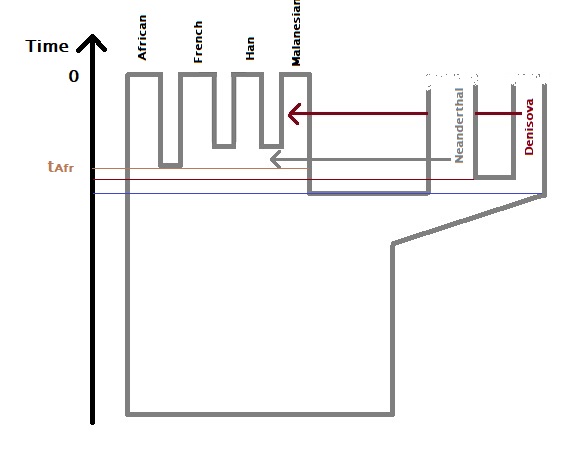Another spectacle that emerged from Pääbo’s group was the discovery of Homo Denisovans from a bone sample excavated in Denisova Cave in southern Siberia. They possess the type of hominin mtDNA that shares a common ancestor with modern human and Neanderthal mtDNAs. And the stratigraphy of the location suggested the new samples lived at similar times to Neanderthals.
Where do they stand?
If we define the timelines as a function of pair-wise nucleotide differences of the complete mitochondrial DNA (mtDNA) from modern humans, Denisovans existed about 385 units away from humans. To put it in perspective: the modern humans are between 0 – 100, the Neanderthals at around 202 and the Chimpanzees at 1462.
Interbreeding
The researchers then searched for gene flow (interbreeding) similar to what was found with the Neanderthals using the five samples (San, Yoruba, Papua New Guinean, Han Chinese, and French) from modern humans. This time, there was no overlap between the French and the Han but found ca. 4% match with the Melanesian.
The new representation, combining the findings of the two studies (genome sequencing of Neanderthal and that of Denisovan), is presented below.

References
Krause et al., The complete mitochondrial DNA genome of an unknown hominin from southern Siberia, NATURE, 2010, 464, 894
Reich et al., Genetic history of an archaic hominin group from Denisova Cave in Siberia, NATURE, 2010, 468, 1053

